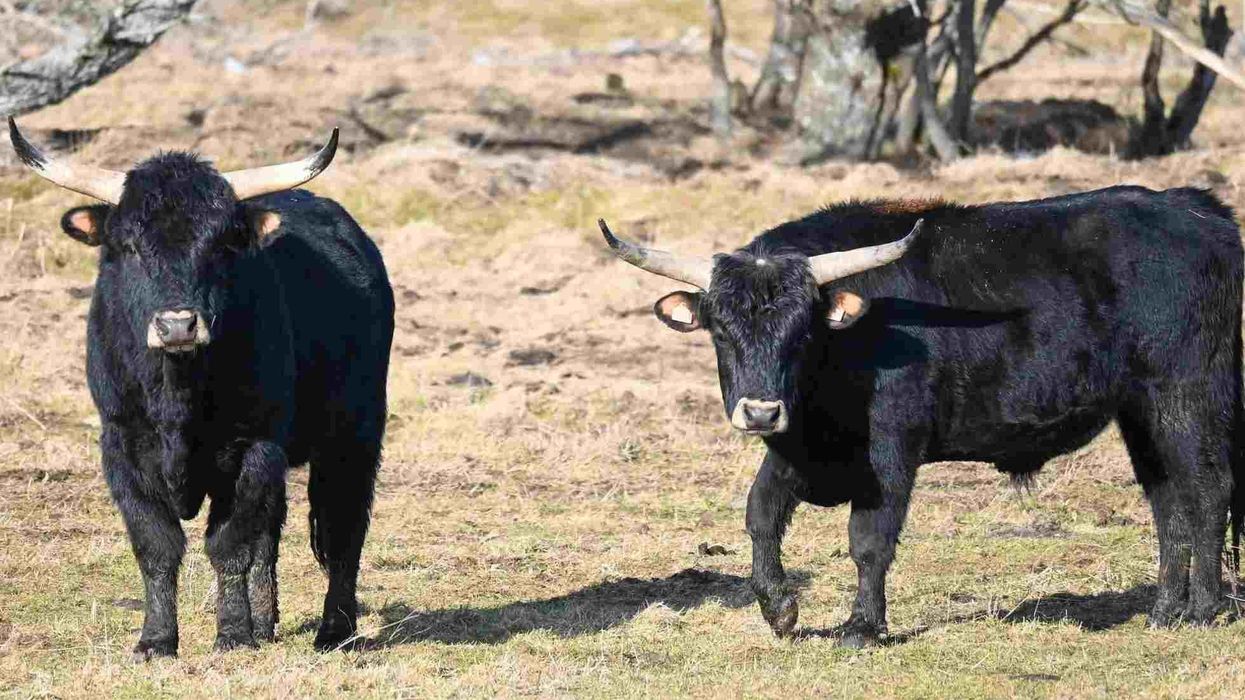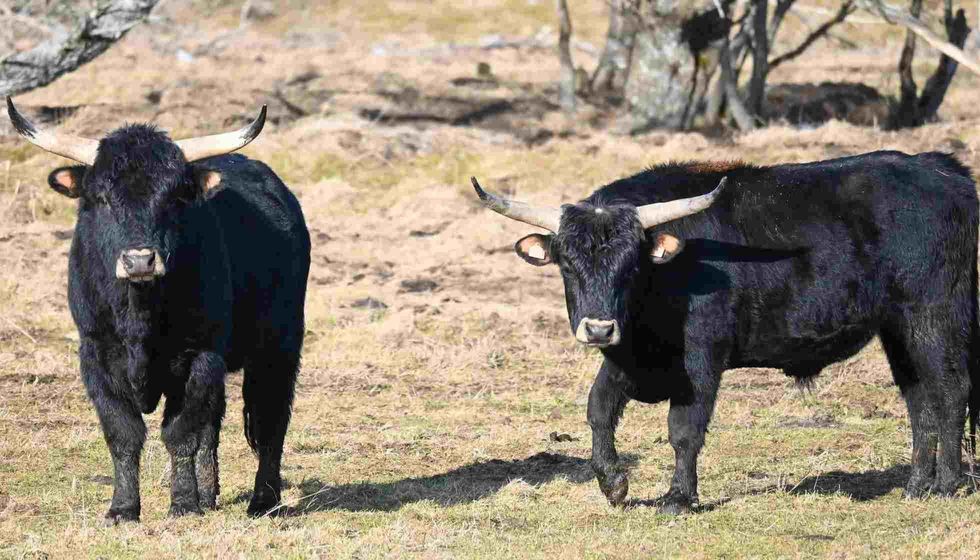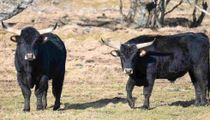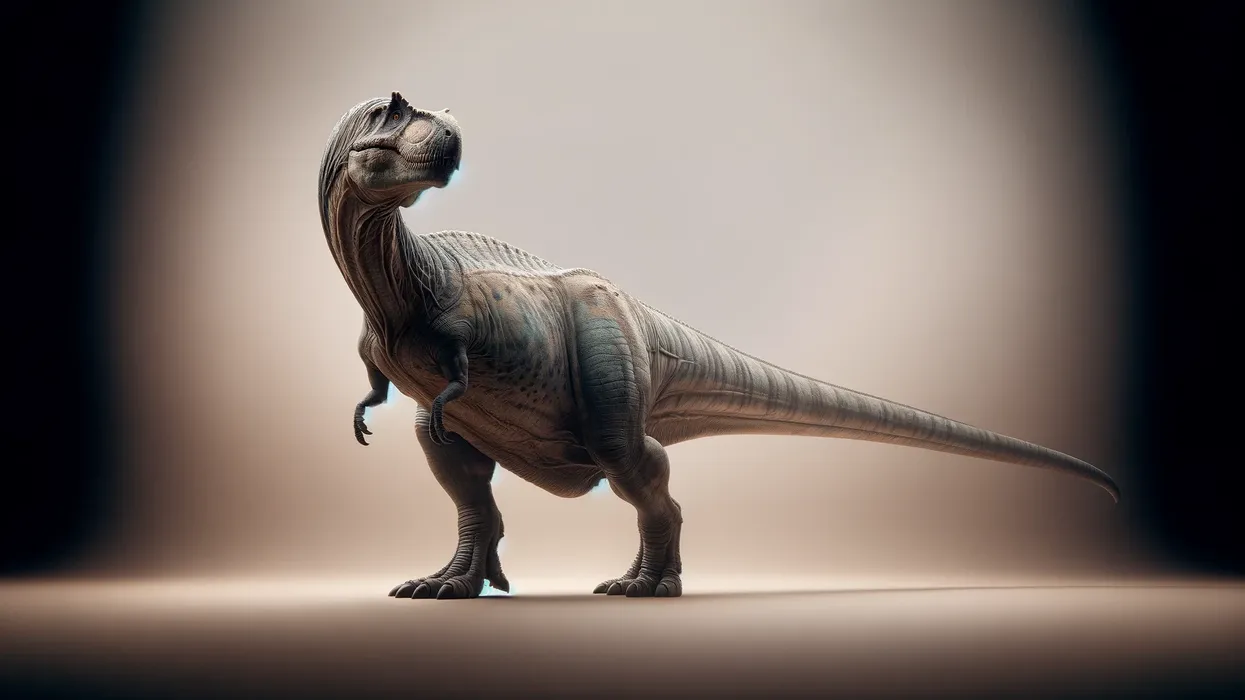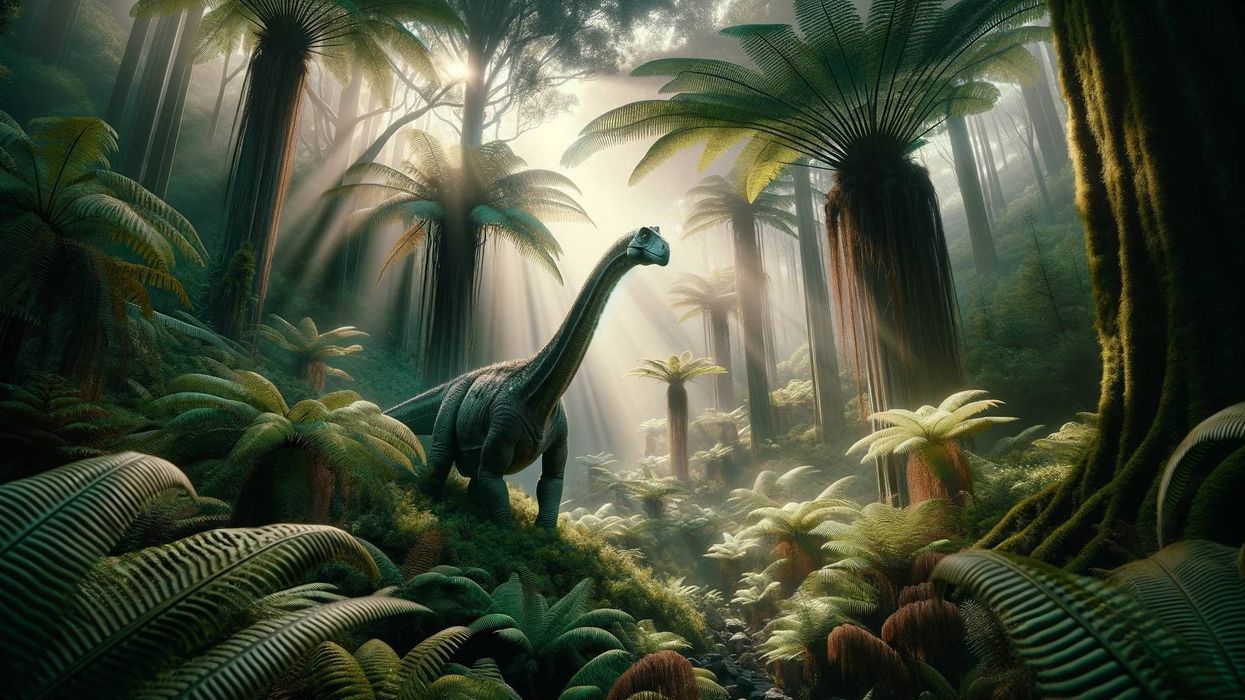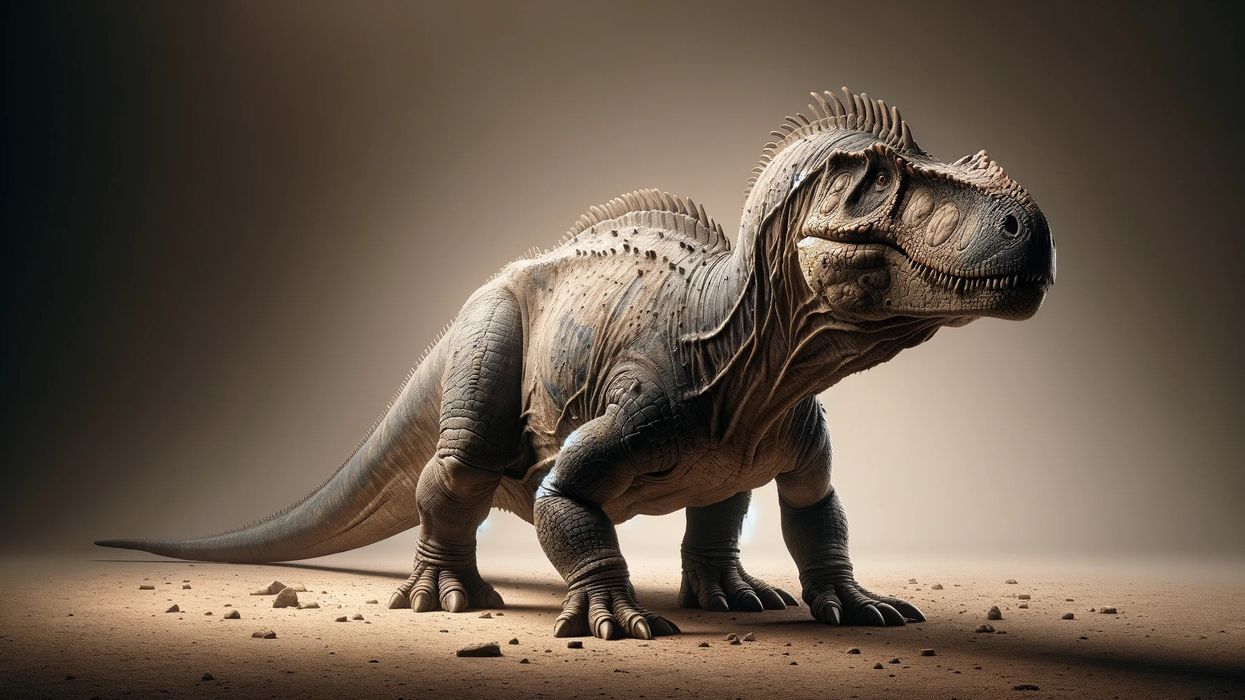Fun Aurochs Facts For Kids

Aurochs or Bos primigenius is an extinct breed of the wild animal according to the International Union for the Conservation of Nature. However, there are endeavors under way of back breeding the long-lost breed of this wild cattle, which is the ancestor of all modern cattle.
There was a time when three subspecies of the aurochs, the North African aurochs (Bos primigenius Africanus) found in North Africa, Eurasian aurochs (Bos primigenius primigenius), which was found in Europe, and the Indian aurochs (Bos primigenius namadicus) which was found in herds across areas of India. Only the European species survived until recent times.
This breed was a strong muscular structured animal that was 71 in and 68.9 in long in length and varied with a weight of 1500-3300 lbs (700-1500 kg). They were often compared with the size of a Rhino.
The calves of an Aurochs were chestnut in color, and with their development, their color turned into dark brown or black. They had long horns, which were 31 inches long and a diameter that measured between 3.9 - 7.9 inches.
For more information regarding the Aurochs bull, read on. For more animal facts like the aurochs bull, take a look at bharals and the Nubian ibex.
Aurochs Interesting Facts
What type of animal is an Aurochs?
Aurochs or Bos primigenius is an extinct species of wild cattle.
What class of animal does an Aurochs belong to?
Aurochs belong to the Mammalia class.
How many Aurochs are there in the world?
Asian, European, and North African grasslands and forests were filled with this marvelous species for thousands of years until overhunting became the reason for their extinction.
Where does an Aurochs live?
Aurochs were said to freely roam around in the grasslands and forests of Asia, Europe, and North Africa under different subspecies. In the land of Asia, they were found in the forests of Karnataka (India) and were known as the Indian aurochs (Bos primigenius namadicus).
On the other hand, Eurasian aurochs ( Bos primigenius primigenius ) were found in the grasslands of Central Asia and Siberia. The North African aurochs (Bos primigenius Africanus), as the name suggests, lived in the forests of North Africa.
What is an Aurochs' habitat?
Like other herbivores, aurochs loved the habitat of open grasslands for natural grazing along with other herbivores. With the constantly growing world population, the habitat of aurochs was disrupted, and they were fragmented.
In the last year of its survival, the aurochs got narrowed down to live around forests where there were little or no competing domesticated herbivores like the domestic cattle.
Who do Aurochs live with?
Generally, Aurochs were known to form herds for at least a year and move in, probably not more than the number of 30. Because of the very little study available on Aurochs, we cannot really give concrete details on these traits of the Auroch.
How long does an Aurochs live?
Aurochs like the Indian aurochs and the others were known to live for 25 to 30 years in the wild.
How do they reproduce?
Aurochs used to participate in internal breeding with a bull and a cow. Their breeding time was during late summer.
Calves were born during the spring season so that they got an ample amount of time to develop and be ready to face the harsh winters.
As the winter season brought diseases and infections, springtime birth and winter breeding was very beneficial for the calves because it gave them the time to grow their immune system traits that were capable enough to fight the diseases.
What is their conservation status?
The conservation status of the wild species of aurochs (Bos primigenius) is Extinct as per the International Union for Conservation of Nature Red List (IUCN Red List) across the Asian, European, and North African shrublands. The reason for the extinction of this grazing species is overhunting.
Aurochs Fun Facts
What do Aurochs look like?
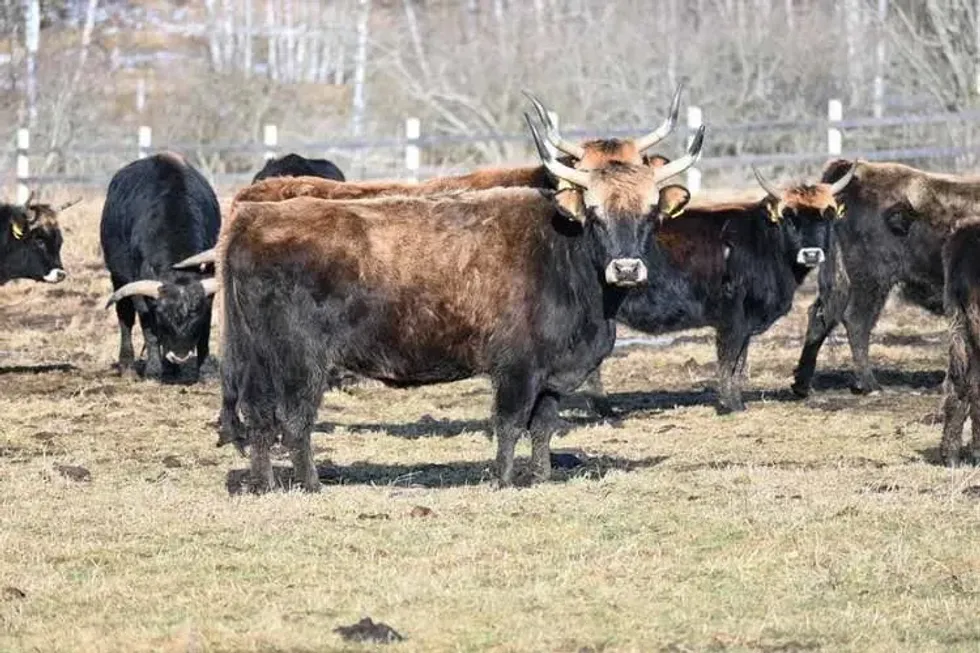
These large herbivores were the first generation of the domestic cattle of South Asia or Zebu.
According to the cave paintings, the claves were born of chestnut color, which turned into black or dark brown with a white stripe running down on their spine after developing for months into young bulls. Both sexes of this breed had a light-colored muzzle.
Although the modern cattle are descendants of the Bos primigenius (Aurochs) still Aurochs had a strikingly different appearance than that of modern cattle, with whom they would share genetic traits; the ancient species had a shoulder height equal to their trunk length, the legs were slender and longer as compared to the modern cattle.
The skull was considerably larger than in most cattle breeds. This wild breed had a strong neck and muscular shoulder structure.
Their massive horns were majestic and so long that they measured up to 31 inches in length and diameter; they measured between 3.9 - 7.9 inches.
How cute are they?
Not many studies accurately describe what this ancient wild species exactly used to look like. But then if the descriptions and cave paintings (present in the archives) are to be believed, aurochs were muscular with broad-shouldered breeds, making them a majestic grazing species. So this extinct animal can't really be associated with the word cute.
How do they communicate?
Even though there is no specific study that suggests how this breed of animals communicated but if their genetic descendants are to be taken into account, they were quiet animals that moved in herds and communicated to other aurochs in vocalizing with a soft moo, and use a different kind of moos for different purposes.
How big is Aurochs?
Even though the data given by various authors differ from each other, the average for this ancient species was 71 in tall and 68.9 in long in length. And if compared with a domesticated grazing modern cattle, Bos primigenius (Aurochs) was a much larger wild species as the modern cattle's length is 59 inches.
How fast can an Aurochs run?
According to the very few studies which are present there on aurochs, it has been said that Bos primigenius (Aurochs) was fast and swift in its movement. No particular figure is there to accurately tell their speed though we can say that the aurochs were aggressively wild or rather dangerous and, upon teasing, could toss the teasing person.
How much does an Aurochs weigh?
The extinct aurochs evolved in India million years ago and moved to the Middle East, and finally reached Europe about 250,000 years ago, making their subspecies varied with their weight ranging from 1500lb to 3300 lb (700-1500 kg).
They were wild heavy majestic animals with very long horns of about 31 inches and a broad shoulder that was of the same length as their trunk.
What are their male and female names of the species?
There are no specific names associated with the male and female species of this ancient wild animal. However, it has been said that they were confused by people as cows (females) and bulls (males).
What would you call a baby Aurochs?
A baby auroch was called a calf like any other baby of a cattle. Calves, produced from breeding, would be of a chestnut color which later in their growing stage would turn into dark brown or black.
What do they eat?
These wild grazing animals, which went extinct in 1627, used to survive on grasslands. These large herbivores had hypsodont jaws which made it pretty clear that they used to graze and had a genetic food choice very similar to that of cattle.
The extinct Aurochs (Bos primigenius) was an habitant of wetter areas and, during the winter season, survived on twigs along with grasses.
Are they loud?
Not many studies are there which accurately suggest the loudness of this wild breed of animal. Though if descendants are to be taken into account, they were not very loud animals.
Would they make a good pet?
This ancestor of the modern cattle was domesticated by the East and the Indian subcontinent, which gave rise to two of the modern cattle known as taurine and zebu. Archeological studies prove the domestication dates back to 8,000-10,000 years in India and North Africa.
Many modern cattle show the genetic similarities that were shared with their extinct grazing ancestor. Still, it has been considered as a different species.
Did you know...
With the decline in the population of this breed of animal, hunting was ceased, and the royal court provided open fields for grazing and breeding for the aurochs. The court took the help of gamekeepers, who were given the charge to facilitate the aurochs with open fields.
They were also exempted with liabilities in exchange for the responsibility given by the court.
Until 1564, the gamekeepers accounted for 38 animals. Poaching of this animal was a punishable offense and led to death.
Calves of this animal breed which reached the European grassland about 250,000 years ago, were vulnerable to wolves, whereas the adult aurochs could literally toss these predators upon any threat.
These aurochs bull breeds were so dangerous that during the mating season, which was around the late summers, they used to engage in fights that were so terrible that they would lead to death, and there are pieces of evidence of this found in the region of Jaktorów.
There are many descriptions and cave paintings that suggest the basic appearances and color of an Aurochs; these descriptions suggest that the grazing animals which date their existence million years ago had long curly forehead hair, but there are no studies that suggest the color of those hair present on their forehead.
When did the last Auroch die?
The last wild Auroch, which is the ancestor of the modern cattle, faced extinction in 1627 in Jaktorów Forest, Poland. The last auroch, which accounted to be the last living auroch, was a female who died because of natural causes.
Although a type of auroch faced extinction in Britain way back in the bronze age, only the other types survived in the European, Asian, and Eastern regions.
Are Aurochs back?
Aurochs are not back yet, though endeavors like back breeding which aims at restoring the wild large size breed with the help of scientists and breeders have been going on. Scientists are trying to trace the traits like the imperial horns and stripes which the auroch had.
However, the conservationists have already begun their quest of rewilding the extinct breed by creating a new auroch-style breed known as tauros, which are said to be less aggressive than aurochs.
A plan, under which 500 different animals are at different stages of being potential modern-day aurochs, is also in effect. Specimens of Tauros cattle are showing physical similarities with that of aurochs.
Here at Kidadl, we have carefully created lots of interesting family-friendly animal facts for everyone to discover! Learn more about some other mammals including the zebu and the plains zebra.
You can even occupy yourself at home by drawing one of our Aurochs coloring pages.
We Want Your Photos!
More for You
See All
Bachelor of Arts specializing in Journalism and Mass Communication, Postgraduate Diploma in Sports Management

Moumita DuttaBachelor of Arts specializing in Journalism and Mass Communication, Postgraduate Diploma in Sports Management
A content writer and editor with a passion for sports, Moumita has honed her skills in producing compelling match reports and stories about sporting heroes. She holds a degree in Journalism and Mass Communication from the Indian Institute of Social Welfare and Business Management, Calcutta University, alongside a postgraduate diploma in Sports Management.
Bachelor of Business Management

Yashvee PatelBachelor of Business Management
Yashvee has won awards for both her writing and badminton skills. She holds a business administration honors degree and has previously interned with social media clients and worked on content for an international student festival. Yashvee has excelled in academic competitions, ranking in the top 100 in the Unified International English Olympiad and placing second in an essay-writing competition. Additionally, she has won the inter-school singles badminton title for two consecutive years.
Disclaimer
1) Kidadl is independent and to make our service free to you the reader we are supported by advertising. We hope you love our recommendations for products and services! What we suggest is selected independently by the Kidadl team. If you purchase using the Buy Now button we may earn a small commission. This does not influence our choices. Prices are correct and items are available at the time the article was published but we cannot guarantee that on the time of reading. Please note that Kidadl is a participant in the Amazon Services LLC Associates Program, an affiliate advertising program designed to provide a means for sites to earn advertising fees by advertising and linking to Amazon. We also link to other websites, but are not responsible for their content.
2) At Kidadl, we strive to recommend the very best activities and events. We will always aim to give you accurate information at the date of publication - however, information does change, so it’s important you do your own research, double-check and make the decision that is right for your family. We recognise that not all activities and ideas are appropriate for all children and families or in all circumstances. Our recommended activities are based on age but these are a guide. We recommend that these ideas are used as inspiration, that ideas are undertaken with appropriate adult supervision, and that each adult uses their own discretion and knowledge of their children to consider the safety and suitability. Kidadl cannot accept liability for the execution of these ideas, and parental supervision is advised at all times, as safety is paramount. Anyone using the information provided by Kidadl does so at their own risk and we can not accept liability if things go wrong.
3) Because we are an educational resource, we have quotes and facts about a range of historical and modern figures. We do not endorse the actions of or rhetoric of all the people included in these collections, but we think they are important for growing minds to learn about under the guidance of parents or guardians.
